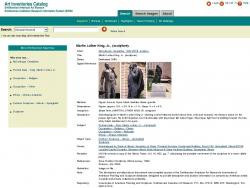Susan Ogilvie's collections
Access Series: Nostalgic Popular "Pop" Culture 1950s-2000s
<p>This inspiration collection of nostalgic popular "pop" culture from the 1950s, 1960s, 1970s, 1980s, 1990s and 2000s—super heroes and super villains, Muppets, cartoon characters, Star Wars, Disney and Pixar characters, Transformers, and movies was used for a collage activity and discussion prompt in an informal learning activity, "Me & My World: Personal Ecology/Interest Inventory" with a group of teens with cognitive and intellectual disabilities. Students were asked about their favorite pop culture influences from the past and present. Use the visible thinking routine, "See|Think|Wonder" as a starting point for a discussion prompt, and the images for inspiration. </p><p>Tags: decision-making, self-determination, student empowerment, disability, All Access Digital Arts Program</p>
 Susan Ogilvie
Susan Ogilvie
97
Remembering the Civil Rights Movement
<p>This is a collection of monuments, memorials, paintings, and other ways to remember the Civil Rights Movement. Go through the collection and selection your 3 favorite (and delete the rest). Now that you have your 3, create 6 hotspots between them explaining how they work to help tell the story of the Civil Rights Movement.</p>
 Susan Ogilvie
Susan Ogilvie
23
The Black Power Movement
<p>Teaching about the Black Power Movement can be challenging, but has rich rewards. Misconceptions about the Black Power Movement abound, but the ability to contrast their strategies and aims with the earlier Civil Rights Movement allows Social Studies teachers to discuss the complex ways that social movements evolve, change, and respond to the times. In addition, a study of the Black Power Movement helps give context for a broader study of the economic and political shifts in the 1970s and 1980s and the rise of identity politics. This teaching collection includes a variety of resources that could be used to teach about the Black Power Movement, organized into sections for:</p><p>-People in the Movement</p><p>-Goals and Strategies of the Movement</p><p>-Teaching Activities</p><p>General guiding questions for this collection include:</p><p>-What were the distinct problems that the Black Power Movement tried to address? Do they remain today?</p><p>-What were the strategies of the Black Power Movement? Do you agree or disagree with these? </p><p>-Why and how do social movements develop and evolve? </p><p>-What defines a successful social movement? Was the Black Power Movement successful?</p><p>- Can a social movement survive beyond the demise of its leadership?</p><p>-What is the role of the arts in promoting the ideals of social movements?</p><p>This is a work-in-progress based on the digitized materials within the Smithsonian Learning Lab's collection--it is not meant to be wholly definitive or authoritative.<br /></p>
 Susan Ogilvie
Susan Ogilvie
31
The 1960s--A Decade Collection
<p>This is a topical collection about American life and politics in the 1960s. Resources in this collection might be helpful to students and teachers working on projects about the decade. It is not meant to be completely comprehensive, but rather includes highlights of the Smithsonian's collection spanning art, popular culture, social trends, leadership, and technology.</p><p>Teachers and students might copy and adapt this collection to suit their needs; highlighting a specific aspect of life in the 1960s and adding annotations and additional resources.</p><p>tags: Sixties, Kennedy, Camelot, civil rights, Vietnam, politics, decade</p>
 Susan Ogilvie
Susan Ogilvie
97







